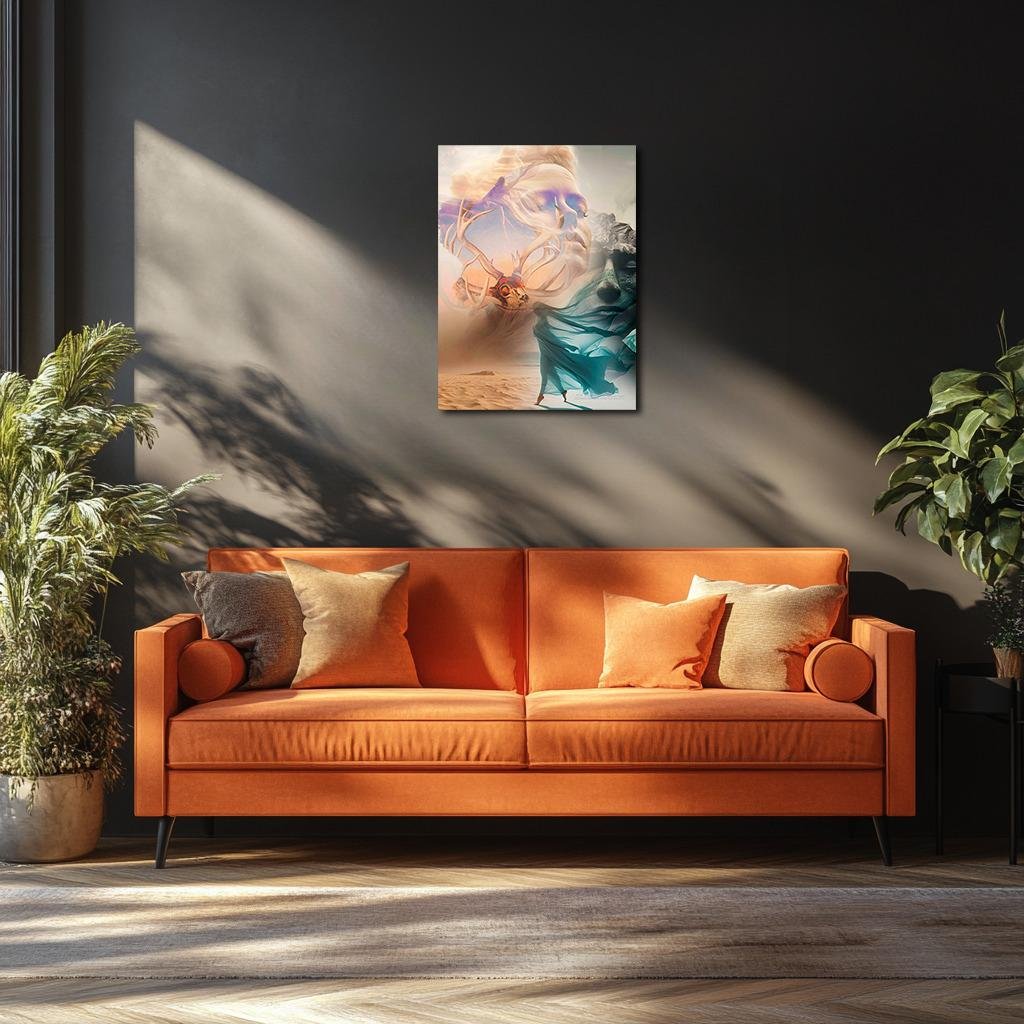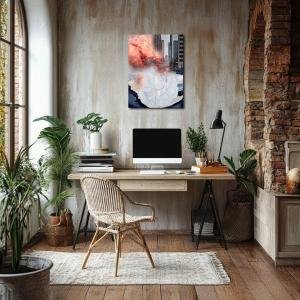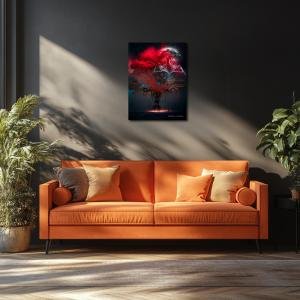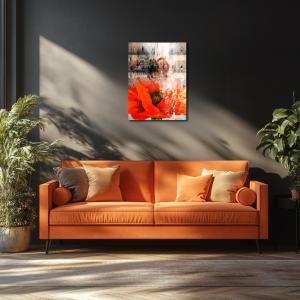Whispers from the Faraway: A Tribute to O’Keeffe’s Distant Longing
Whispers from the Faraway reimagines Georgia O’Keeffe’s From the Faraway, Nearby as a spiritual vision of memory and motion. Centered on a glowing elk skull entangled with dreamlike antlers, the piece blends stone faces, wind-swept veils, and desert sands to reflect emotional distance and intimate presence. With a palette of peach skies, ivory bone, stone gray, and flowing turquoise, the scene evokes longing, loss, and quiet strength. O’Keeffe’s motifs of the skull and desert are given breath and human form, creating a symbolic meditation where the faraway becomes internal, and memory drifts like wind across time’s soft dunes.
Please see Below for Details…
Hotline Order:
Mon - Fri: 07AM - 06PM
404-872-4663
Whispers from the Faraway is a conceptual reimagining of Georgia O’Keeffe’s From the Faraway, Nearby , blending the surreal elegance of antlers, the abstraction of emotional space, and the drifting silence of desert wind. This layered visual work honors O’Keeffe’s poetic meditation on memory, presence, and internal distance by expanding her motifs into an ethereal desert-scape of symbolic embodiment. The original elk skull with antlers, once resting against the desert sky, now hovers between realms—part human breath, part dream relic. Its echo resonates through the folds of a veiled figure, the contours of a face carved in silence, and the whispering dunes that speak of memory’s windswept erosion.
At the spiritual core of the composition lies the majestic antlered skull, now blended with a sleeping visage. The antlers reach like neurons through a dusty sky, their shape suggesting both growth and entanglement, an impossible symmetry of survival and surrender. The horns, tinged in ghostly ivory and burnt sienna, glow against a peach-washed atmosphere. Their hue radiates remembrance and resilience, symbolic of life’s bones exposed to beauty and time. The skull is no longer a trophy or totem; it has fused with consciousness, speaking of ancestral echoes and lost knowledge carried through blood and silence.
Hovering near this central form is a fragmented stone face, worn and closed-eyed, like a forgotten monument to grief. Its tone of granite blue and ash gray suggests stillness—an emotion too deep to express. The rough texture speaks to time’s relentless sculpting, while the softened edges around the mouth and eyes suggest compassion and fragility, as though the soul behind the stone has not faded, only withdrawn.
A woman, draped in turquoise fabric that flows like water, strides across a barren stretch of sand at the lower right. Her body, nearly consumed by the wind’s gesture, represents O’Keeffe’s own journey—forward yet tethered to the inner world. Her figure floats between movement and stillness, as though pulled toward something unseen, far away. The fabric’s color, a cool teal and muted jade, symbolizes introspection and serenity, a cooling balm to the dry austerity of the desert. It ripples like a flag of resilience, resisting time’s erasure.
The colors in this piece are deeply intentional and rooted in O’Keeffe’s visual philosophy. The desert’s pale sands are rendered in soft beige, taupe, and whispering ochre, evoking timelessness and exposure. These colors are the body’s bones and the earth’s memory. The peach and lavender tones in the sky reflect a dreamstate—not a literal dawn or dusk, but an eternal moment of contemplation. These hues express not transition, but suspension—a breath held in the distance between places, people, and inner states.
The blues range in emotional register. Icy cyan flutters in the veils of the wandering figure, whispering of longing and freedom. A deeper, melancholic navy seeps into the shadows and sculpted facial planes, grounding the image in solemnity and emotional depth. Meanwhile, the bone-white antlers pierce this landscape like veins of memory, simultaneously grounding the viewer and reaching beyond comprehension. They bridge body and spirit, form and ether.
The concept behind this reinterpretation lies in dissolving the border between internal and external landscapes. O’Keeffe's original work already blurred this line, placing the skull—traditionally a symbol of death—against a sky that was both expansive and intimate. In Whispers from the Faraway , that tension is magnified. The skull is no longer distant; it is embodied, humanized. Its breath becomes clouds. Its horns touch thoughts. Its memory enters the skin of the woman walking below, and the stone soul resting to the side.
The idea of “faraway” becomes psychological, not geographical. The nearby becomes what lives inside the body—grief, love, absence, identity. O’Keeffe painted solitude without bitterness, distance without despair. This reinterpretation seeks to echo that strength, offering a visual meditation on how we carry the past as both burden and illumination.
In creating this piece, I leaned into the sensation of stillness interrupted by memory’s voice. O’Keeffe’s art is never merely visual—it is sonic and tactile. One hears wind in her colors, feels touch in her petals, and senses story in her skulls. Whispers from the Faraway pays homage to that multidimensional presence by layering symbols without hierarchy—so that the viewer feels, not analyzes. It is not a narrative to be followed, but a space to inhabit. Like her original, this piece asks not for understanding, but for still attention.
Add your review
Your email address will not be published. Required fields are marked *
Please login to write review!
Looks like there are no reviews yet.








